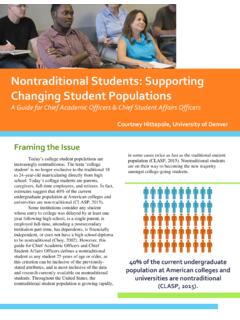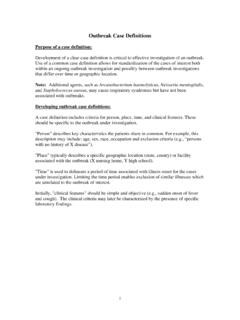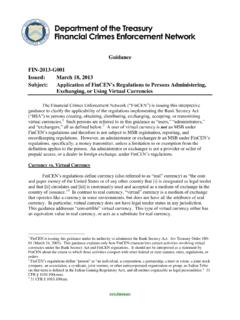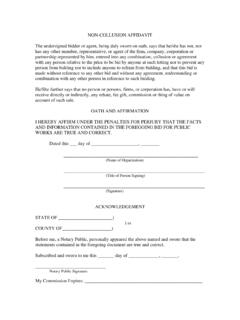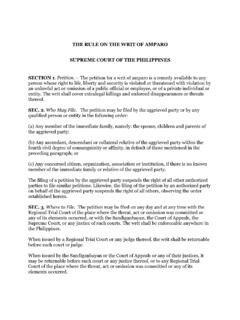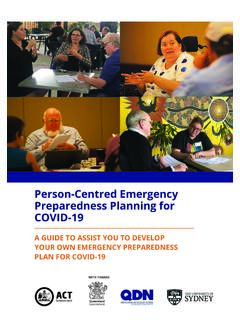Transcription of Safe Spaces and Brave Spaces
1 NASPA Policy and Practice Series (Volume 1, Issue 1) NASPA Policy and Practice Series (Volume 1, Issue 1)11 OVERVIEWThe term safe space has become part of recent controversy surrounding a larger debate regarding freedom of expression on college campuses. An exploration of the term s use, however, shows that it has been appropriated by the media and campus administrators without a clear understanding of the nuanced context from which it has been drawn. Furthermore, a 2013 publication by Brian Arao and Kristi Clemens described how the term Brave space may more aptly describe the practice of safely fostering challenging dialogue within the classroom environment.
2 This paper provides a thorough background on the history of safe Spaces and Brave Spaces within the contexts of movement-building, academic theory, student support services, and the classroom; the paper then uses campus-based research and case studies to exemplify the kinds of safe and Brave Spaces that actually work. Finally, this paper provides recommendations for student affairs professionals to better understand safe and Brave Spaces and challenges these individuals and their campuses to prioritize the use of these Spaces to ensure educational access and success for the entire campus 2, October 2017 Diana Ali Safe Spaces and Brave SpacesHistorical Context and Recommendations for Student Affairs Professionals NASPA Policy and Practice Series (Volume 1, Issue 1) NASPA Policy and Practice Series (Volume 1, Issue 1)
3 32 THE AUTHOR Diana Ali, MA, MPP, is a policy analyst with NASPA s Research and Policy Institute (RPI). In this role she analyzes trends in state and federal legislation and draws implications for student affairs professionals. She continues to work with RPI to tackle policy issues regarding safe space making and freedom of expression on campus. Copyright 2017 by the National Association of Student Personnel Administrators (NASPA), Inc. All rights reserved. No part of this publication may be reproduced or transmitted in any form or by any means, electronic or mechanical, including photocopying, recording, or by any storage and retrieval system without written permission from the publisher.
4 NASPA does not discriminate on the basis of race, color, national origin, religion, sex, age, gender identity, gender expression, affectional or sexual orientation, or disability in any of its policies, programs, and services. NASPA Policy and Practice Series (Volume 1, Issue 1) NASPA Policy and Practice Series (Volume 1, Issue 1)32 Both Ellison and Schapiro used the term safe space as a pivotal part of their messaging; however, a closer look at how each of them used the term reveals key differences. Ellison defined a safe space as a place where students with different ideas can isolate themselves from those who would disagree with them (Grieve, 2016).
5 This kind of space , he claimed, coddles students, meeting them exactly where they are comfortable, without pressing them further (Grieve, 2016). Schapiro (2016) defined a safe space similarly as a space where students of diverse backgrounds can find comfort, but instead he believes that comfort leads to a valuable outcome for students by also creating opportunities for honest dialogue and learning. Both administrative leaders exemplify how a safe space is presented within varying contexts. Ellison identified the kind of safe space , utilized within student support or activist Spaces , where historically marginalized students require specific support and attention (Grieve, 2016); Schapiro (2016) identified the kinds of safe Spaces fostered in a classroom atmosphere.
6 Both university representatives operate under an assumption that they are referring to the same learning environment, and the debate takes off from here. Both kinds of safe Spaces appear on today s college campuses the kind of safe space allowing marginalized individuals opportunities to retreat from the very real threats and demands they face by their very existence and the kind of space to allow students to process new and uncomfortable ideas productively. This paper explores the various contexts of safe Spaces within the higher education community and posits that a fuller understanding of safe Spaces , Brave Spaces , and the differentiation between the two may clarify some of the more resounding misconceptions within the safe space debate.
7 SAFE Spaces VERSUS Brave Spaces : DEFINITIONS AND HISTORICAL CONTEXTThe term safe space has been used in various contexts in higher education from movement-building, to academic theory, to student support services, as well as in the classroom. Although the origin of the term remains unclear, its many uses have ultimately centered on increasing the safety and visibility of marginalized or oppressed community members. While the focus of the current discussion on college campuses has been on safe Spaces , the history behind the term, as shown in the following pages, demonstrates that it is used to describe different types of safety.
8 Therefore another term Brave space is introduced to draw attention to the differences and to bring clarity to the term Brave space was first popularized by Brian Arao and Kristi Clemens (2013) in chapter eight From Safe Spaces to Brave Spaces of their book The Art of Effective Facilitation: Reflections From Social Justice Educators. In it, a Brave space within a classroom environment contains five main elements: Controversy with civility, where varying opinions are accepted Owning intentions and impacts, in which students acknowledge and discuss instances where a dialogue has affected the emotional well-being of another person Challenge by choice, where students have an option to step in and out of challenging conversations In fall 2016, University of Chicago Dean of Students John Ellison chose to address what he and many others in higher education felt was a disconcerting trend toward intellectual isolationism on college campuses.
9 He published a letter to incoming students, stating that the university would no longer tolerate the use of trigger warnings or safe Spaces : We [at the University of Chicago] do not condone the creation of intellectual safe Spaces where individuals can retreat from ideas and perspectives at odds with their own (Grieve, 2016). In contrast, commentary made earlier in the year by Morton Schapiro (2016), president of Northwestern University, resurfaced affirming the value of safe Spaces , stating, I m an economist, not a sociologist or psychologist, but those experts tell me that students don t fully embrace uncomfortable learning unless they are themselves comfortable.
10 Safe Spaces provide that comfort (para. 10).Safe Spaces and Brave SpacesHistorical Context and Recommendations for Student Affairs Professionals NASPA Policy and Practice Series (Issue 2)Copyright 2017 NASPA 3 Respect, where students show respect for one another s basic personhood No attacks, where students agree not to intentionally inflict harm on one another A commonly constructed safe space within a classroom environment is designed to have most if not all of these components, and for this reason, along with others discussed in more depth in the following pages, these intentional classroom environments are now increasingly referred to as Brave Spaces .
